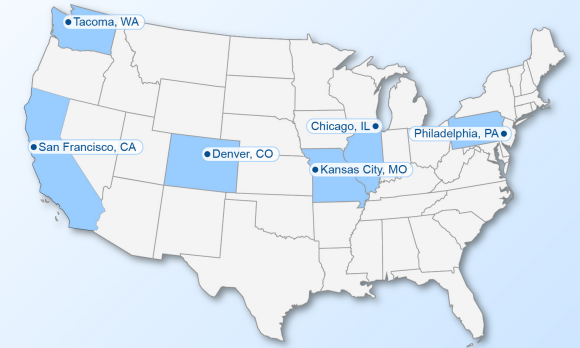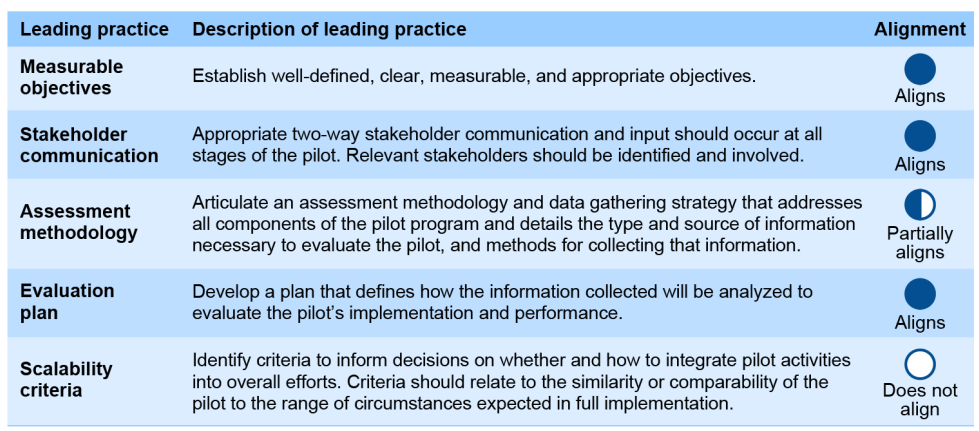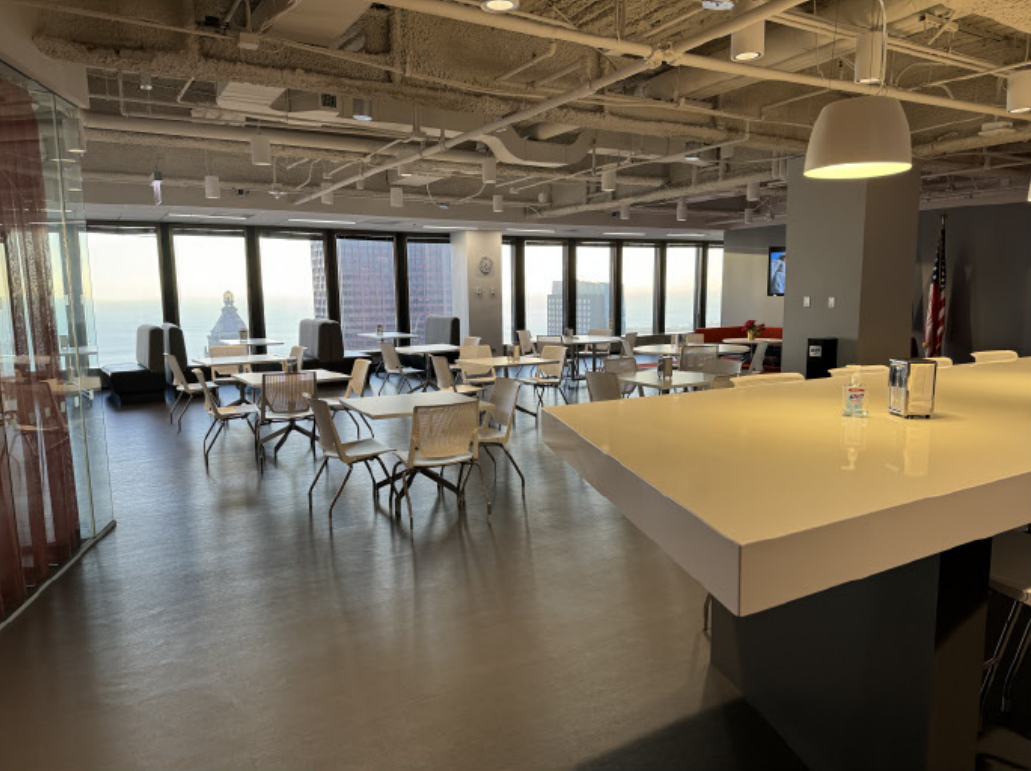Pilot on sharing federal office space looks promising, but GSA has work to do before scaling up
GSA needs more data before it can expand a coworking pilot that lets agencies share federal office space, the Government Accountability Office found.
As agencies face a unique opportunity to right-size the amount of federal office space they own and lease, federal coworking spaces present an enticing way to save on both costs and square footage.
A coworking pilot, which the General Service Administration first launched in July 2023, is already showing promising results. But without the right data under its belt, GSA may struggle to scale up coworking opportunities for agencies, the Government Accountability Office said in a Sept. 11 report.
As part of its Workplace Innovation Lab pilot, GSA created six coworking offices across the country, where employees can sign up to work in federal office space that’s available to any agency wanting to use it. Just over a year into the pilot program, GSA reported that at least 924 federal employees across more than 59 federal entities visited the coworking spaces more than 1,839 times combined.

The pilot for sharing office space between agencies “is a way to get some information on if this is a tool that should be more broadly used going forward to achieve cost savings, achieve space reductions,” GAO Director of Physical Infrastructure David Marroni said in an interview with Federal News Network.
GSA plans to analyze the successes and challenges of the pilot program to determine how and where it will continue expanding shared office spaces for agencies. It’s also a key way GSA is looking to reduce the federal footprint and help agencies cut real estate costs.
But there is work ahead for GSA before it can scale up the pilot, which is expected to sunset in 2026.
For example, GSA has been collecting data in the coworking pilot by noting every time a federal employee scans a QR code to sign into one of the shared office buildings. After collecting that usage data, GSA sends out surveys for employees to provide feedback on their experience using the federal office space.
But GAO found that because GSA sources data only from employees who check into the building — and not everyone who uses the space actually does so — the data is somewhat limited. That means when GSA sends out surveys for feedback, not all employees who use the buildings are necessarily getting the opportunity to share their thoughts about the value of the space.
“GSA has some information to inform their decisions on the pilot going forward, but the data could be improved by ensuring they’re capturing the full universe of folks coming in,” Marroni said. “But they are taking steps. They have a new automated reservation process in place. That still won’t fully address the data issue, but they are trying to take steps to improve the quality of the data.”

Additionally, although the coworking spaces are free for agencies as part of the pilot, GSA is eventually planning to charge agencies to use the offices. Developing a pricing system for using coworking spaces will be important to do early on — well before the pilot’s conclusion in 2026 — to help GSA make future decisions for expanding and adjusting the coworking program, GAO said. It will also help agencies understand the cost savings that could be available to them.
In response to seeing a draft of GAO’s report, GSA Administrator Robin Carnahan wrote in an Aug. 20 letter that the agency is developing a cost estimator tool, which is able to compare agencies’ current rent costs against how much they would save by opting for a coworking space instead of a traditional lease. While it would incur costs for agencies to reserve the coworking spaces, they would ultimately save money by letting go of leases and other unneeded office space.
“We think it’s important to have that [pricing] system now, both for purposes of measuring their progress to their own goals for this pilot program, and also to demonstrate results to agencies and to Congress,” Marroni said. “If you invest the money in this kind of coworking model, you can potentially save more on the other end by reducing your office space.”
When and why to share federal office space
Agencies appear on track to reduce unneeded office space and address what GAO previously found to be low utilization rates of federal headquarters buildings. In a telework report to Congress in August, the Office of Management and Budget said agencies have made “considerable” progress to get rid of real estate they don’t need, while improving utilization rates of the federal office space they’re holding onto.
Coworking spaces are a promising strategy to reach that end goal. GSA’s pilot aims to make the layouts and locations of coworking spaces conducive to a wide range of agencies and types of government work.
Some agencies may find themselves in situations where coworking offices will be especially beneficial. For example, the Federal Emergency Management Agency (FEMA) could use coworking spaces when deploying to locations across the country in response to a disaster. The spaces could also lend themselves well to agencies with buildings under construction, and those who have teleworking employees, and therefore less need for a dedicated office space.
In many of those cases, “the other alternative would be costly short-term leases,” Marroni said. “But this might provide an opportunity to secure some space without having to pay those same costs.”
Of course, there are also limitations to the type of work that makes sense for the coworking spaces. Agencies with high amounts of classified work, for instance, are less likely to use the shared offices.
What do the coworking spaces look like?
In developing the shared workspaces, GSA surveyed agencies and other stakeholders to determine what aspects are most important for making federal office space effective. As a result, the six coworking locations include basics such as Wi-Fi access and meeting rooms, as well as other amenities like kitchens, close proximity to public transportation, child care options and plenty of parking.
After visiting GSA’s coworking location in Chicago to evaluate the space for the GAO report, Marroni described the office as “what you would expect.”
“It’s a nice space, it’s centrally located,” Marroni said. “There are some individual offices. There are open areas, conference rooms, meeting rooms — and that’s pretty consistent across these six locations … In terms of the user experience, GSA is still crunching that data, so they’ll have to see as part of the pilot any changes they need to make in how they operate and set up these locations.”

In the pilot, GSA also had to consider cost limitations for developing the coworking spaces. GSA is running the pilot using existing funding and resources, with no additional or direct funding. That meant when GSA set up the coworking spaces, it limited the locations to areas where it already had owned or leased federal office space. The limited budget for the pilot also impacts what features GSA can include to support the employees working there.
“GSA is currently focusing on low-cost solutions in response to additional coworking needs, such as providing lockers for personal items or rearranging furniture,” GAO wrote in its Sept. 11 report. “Wi-Fi expansion, additional security capabilities and more convenient coworking locations are changes that GSA is considering for the future.”
Although it will take time to transform federal coworking spaces into a profitable investment, GSA officials said they expect to see savings on cost and space emerge sometime in the next two to five years.
Copyright © 2024 Federal News Network. All rights reserved. This website is not intended for users located within the European Economic Area.
Drew Friedman is a workforce, pay and benefits reporter for Federal News Network.
Follow @dfriedmanWFED






